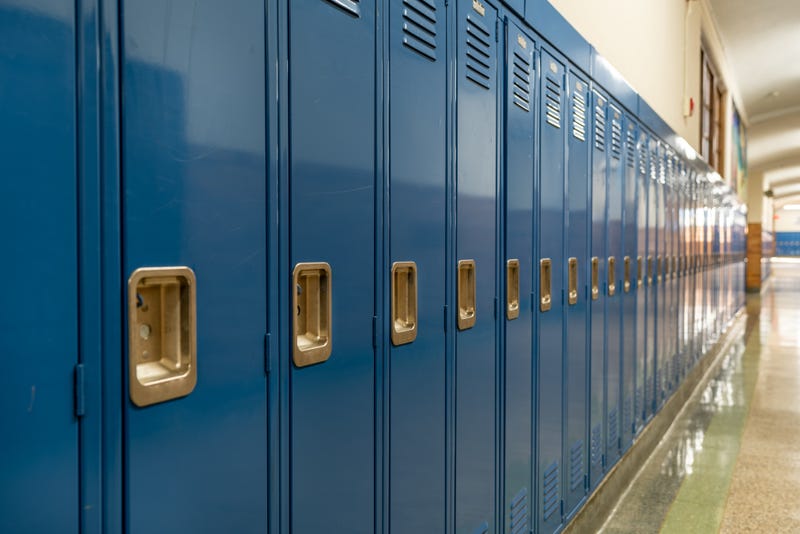
Buffalo, N.Y. (WBEN) - Authorities in Minneapolis, Minn. continue to investigate the actions and lead-up to a 23-year-old, armed with a rifle, shotgun and pistol, shooting through the windows of a Catholic church on Wednesday, killing two children and wounding 17 people.
The gunman, identified as Robin Westman, fired dozens of rounds toward the children sitting in the pews during Mass at the Annunciation Catholic School before taking his own life.
The schoolchildren who died were aged 8 and 10, while 14 other kids and three octogenarian parishioners were wounded, according to officials.
With schools set to return to session next week in Western New York, attention, once again, turns to school safety, and ensuring the security of kids in schools across the region.
Former Buffalo Police captain and current vice president with the Tarian Group, Jeff Rinaldo knows that school safety and security has been a front burner topic for every single educational institution over the last decade, whether it's public, private, parochial places of instruction. The problem with incidents like what occurred Wednesday in Minneapolis is schools and other leaders have to be sure not to become reactionary.
"What you have to look at now is, how good are your plans? How often are you reviewing your plans? How often are you doing exercises and practicing your plans, and then taking a look at, is this the best approach?" said Rinaldo in an interview with WBEN. "Unfortunately, for Catholic schools and some private schools, resources are tough to come by. They don't have the budgets that allow for the above-and-beyond security measures that a lot of municipal schools can employ, so they really need to get creative sometimes, in terms of their school safety and security plans, and what can they do to create a safe space for kids?"
While Rinaldo believes most schools have done a good job of "hardening the target," in terms of the school building itself, he says there may be some extra steps taken to further ensure safety of students, especially for those at a private or parochial institution.
"Any time we're moving children out of that environment - going outside for recess, going to a church, or going to another location that doesn't have the same hardened security measures in place building wise - you are creating a softer target. So I think what you may see happen now is where a lot of these schools keep the kids in the building," Rinaldo said. "They do mass in the gym, maybe, as opposed to actually going over to the church, keeping kids within the confines of the building that they know is adequately secured to the best of their abilities."
What else has Rinaldo noticed from schools across the board, when it comes to ensuring safety and security at facilities within their district this academic year?
"From what we're seeing with a number of our clients is just the addition of security officers to buildings and grades that normally didn't have that in the past. I think what we're starting to see now is where security is becoming just part of the culture of the school," he noted. "The same way that people love their math teacher or the gym teacher, our officers go out of their way to develop relationships with the students. That is a successful security mindset, when security becomes part of the culture and not just a necessary evil."
One potential concern locally this school year is if another shooting or incident takes place at a school, students will not have access to their phones due to the bell-to-bell ban taking place at districts across the state.
With cell phones causing a distraction in schools during the course of the day, leading to such legislation from New York State, Rinaldo feels the schools are well capable of getting the message out, and being able to carry out their safety plans and contacting local officials when an emergency takes place.
"In a situation like this, when something happens, there's a lot of still responsible adults, teachers, the school staff, that are going to be able to call 9-1-1 and get emergency responders there as quickly as possible," Rinaldo said. "The one thing you don't need is an overwhelming of the 9-1-1 system with people calling. You need responsible callers, and most schools have a very good plan in place to call and get the police and first responders there."
The other issue Rinaldo points to is school districts also have plans in place of where to move students in case of an emergency, establishing a reunification spot for kids with their parents.
"You don't want everybody acting as an independent contractor, and parents calling their kids and saying, 'I don't care what they're telling you, come over here, meet me here.' You can't have that, because now you're adding more chaos. So I think that parents have to trust in the plans that the school their child attends has in place," he said. "If they're not aware of what those plans are, they really need to inquire and understand them from themselves. But they also need to have faith in the fact that the school is responsible, they have a plan, and they practice and drill on that plan so that if, God forbid, something like this happens, their children will be safe."


